#fernando ii de aragón
Text

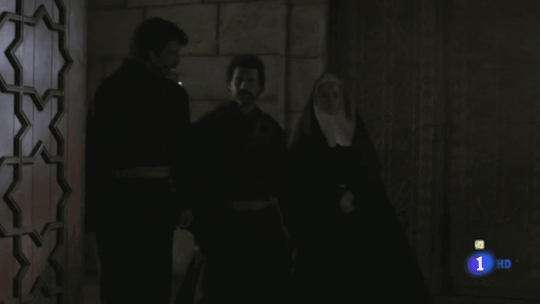


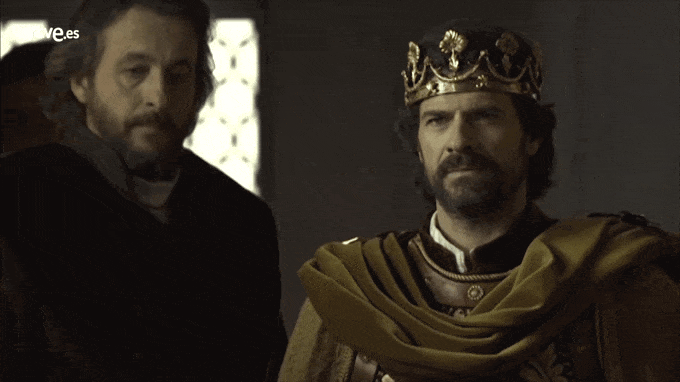
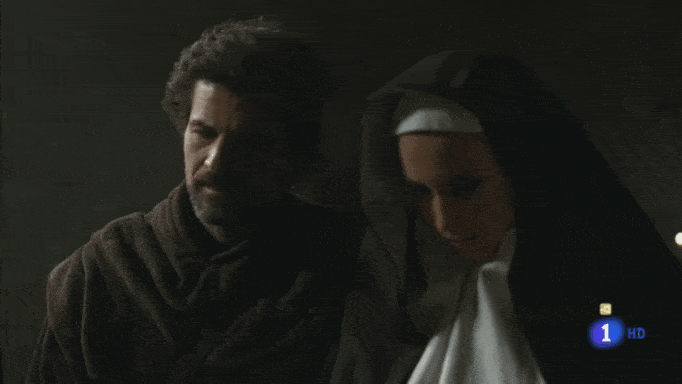

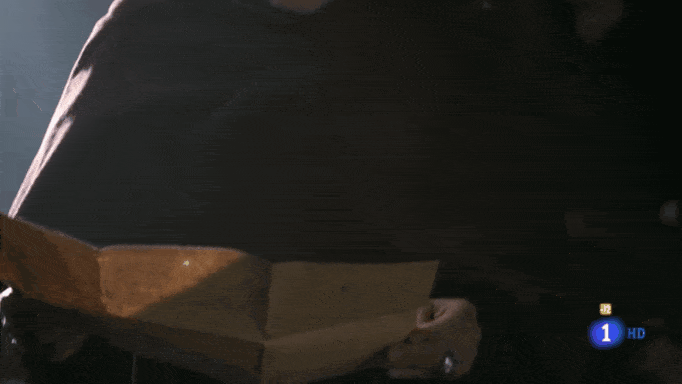


Juraría que la conozco de algo...
Isabel (2012-2014), 2×01 Desencuentros II El Ministerio del tiempo (2015-), 1×04 Una negociación a tiempo
#el ministerio del tiempo#isabel tve#1×04#una negociación a tiempo#2×01#desencuentros#nacho fresneda#aura garrido#rodolfo sancho#michelle jenner#eusebio poncela#ramón madaula#alonso de entrerríos#amelia folch#julián martínez#fernando ii de aragón#ferdinand ii of aragon#isabella i of castile#isabel i de castilla#cardenal cisneros#gonzalo chacón#francisco jiménez de cisneros#emdt#mdt
59 notes
·
View notes
Text
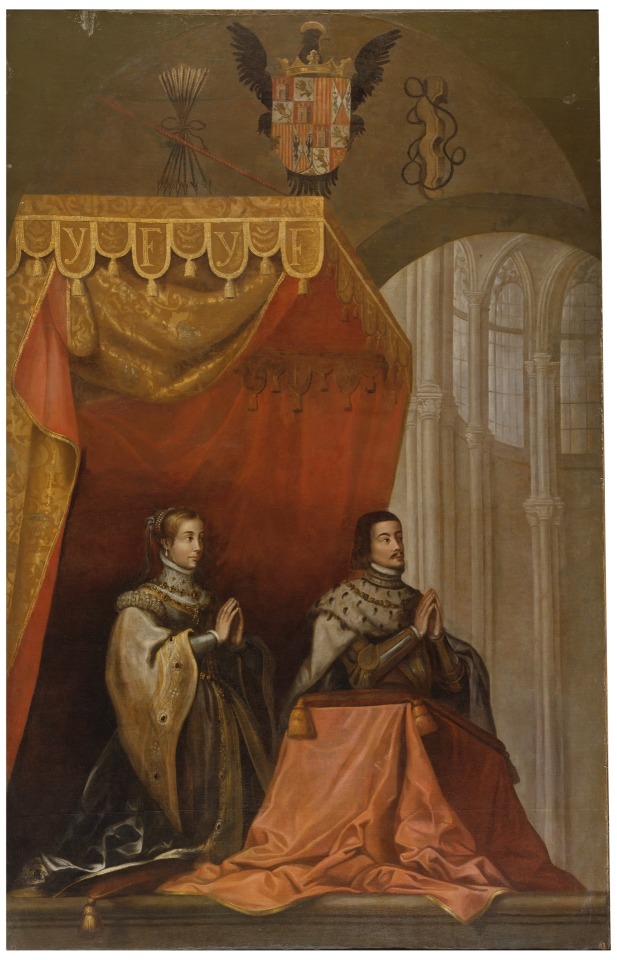
Los Reyes Católicos bajo un dosel. Anónimo, siglo XVII.
#museo del prado#monarquía española#reino de españa#reyes de españa#reyes de castilla#reyes de aragón#isabel la católica#reina de españa#fernando de aragón#fernando ii de aragón#fernando el católico#reyes católicos#casa de trastámara#kingdom of spain#house of trastamara
7 notes
·
View notes
Text

Michael Sittow
Fernando II de Aragón (finales del s. XV - principios del s. XVI)
Kunsthistorisches Museum, Viena
2 notes
·
View notes
Text
[Original date: 19 June 2020]
This very sentimental Spanish TV series about the reign of Isabel I of Castilla keeps crossing my Tumblr dash, and it's just ... ACK. History is complex etc etc but Isabel and Fernando were responsible for some of the most appalling decisions in early modern Europe.
On the pettier level: my father calls me "Isabel" as an endearment (hence the pseudonym/username), so it's jarring to see THAT Isabel all the time.
#text: isabel#ch: isabel de castilla#ch: fernando ii de aragón#isabel talks#history: western medieval#history: western early modern#petty gremlin blogging#twitter salvage 2023
2 notes
·
View notes
Text

#🇪🇸 El primero de los escudos que puede considerarse como Escudo de España es el que adoptaron Isabel I de Castilla y Fernando II de Aragón#el 15 de enero de 1475#concebido como la representación de las soberanías que ejercen En ella se dispuso que las armas combinadas las llevarían con iguales derech#de modo que pertenecerían conjuntamente tanto al rey como a la reina y no dispondrían de armas personales diferenciadas#lo cual es un caso extraordinario en España y con casi total seguridad#en Europa.El yugo. Mezclado con un cordón grueso#hace referencia a la leyenda del famoso nudo gordiano que cuenta que cuando el emperador Alejandro Magno llegó al templo de Gordio#halló un yugo atado por un nudo muy complejo del que se decía que quien lo desatase sería señor de toda Asia. Alejandro#sacó la espada y cortó el nudo#diciendo: “da lo mismo (tanto monta) cortar que desatar". Otros autores añaden que es además un juego de palabras cortesano de la época#cuando se adoptaba como emblema la inicial de la persona amada. Fernando adoptó el yugo#cuya forma coincidía con la de la inicial “Y”#por la que entonces comenzaba el nombre de la reina Ysabel. A su vez#ella adoptó las flechas como emblema de la “F” de Fernando.Las flechas: representadas unas veces#sueltas y otras#paralelas en número variable. Hacen referencia al viejo cuento del padre que al morir dice a sus hijos que#permaneciendo unidos como el haz#serán más fuertes.El Águila de San Juan: símbolo de la reina Isabel la Católica#representa a San Juan Evagelista#al que la reina profesaba gran devoción. Tanto Monta Fuente ABC.
0 notes
Text

Isabel I de Castilla fue la primera reina de la España católica, junto a su esposo Fernando II de Aragón consiguieron unificar los reinos de España al concluir la Reconquista al Moro tras conseguir arrebatar el Reino de Granada en 1492 al último rey moro, Boabdil, después de siete siglos de ocupación musulmana.
En su reinado y gracias a su mecenazgo, Cristóbal Colón descubrió América y fue una ardiente defensora de los indígenas de los pueblos descubiertos contribuyendo a su protección y educación.
22 notes
·
View notes
Text




IMAGENES Y DATOS INTERESANTES DEL DIA 19 DE OCTUBRE DE 2023
Día Internacional de la Lucha contra el Cáncer de Mama, Día Internacional de las Catedrales, Día de la Resolución de Conflictos, Semana Mundial de la Novela, Año Internacional del Mijo y Año Internacional del Diálogo como Garantía de Paz.
Santa Publia / Pudenciana.
Tal día como hoy en el año 1469: Se casan Isabel I de Castilla y Fernando II de Aragón, conocidos como Los Reyes Católicos (título que les atribuyó el papa Alejandro VI), en el Palacio de los Vivero, en Valladolid (España). Lo que supuso la unificación de los reinos de Castilla y Aragón.
En 1868: Nace la peseta en España como unidad monetaria, por decreto del Gobierno Provisional tras el derrocamiento de Isabel II.
En 1900: El físico Max Planck descubre la ley espectral de la radiación del cuerpo negro (ley de Planck), en su propia casa de Grunewald, cerca de Berlín (Alemania).
En 1943: Un joven microbiólogo con 20 años llamado Albert Schatz descubre la estreptomicina, un antibiótico que ayudará a combatir la tuberculosis, pero será su jefe, Selman Waksman, quien se apropiará del descubrimiento y aunque tras la demanda del alumno y acuerdo de compartir el descubrimiento obtendrá el Premio Nobel de Medicina de 1952.
En 1950: El Ejército Popular de Liberación de China ocupa la ciudad de Qamdo, dentro del movimiento que se conocerá como la invasión del Tíbet.
En 1987: Sucede el Lunes Negro en la bolsa de Nueva York, el índice Dow Jones pierde más de 500 puntos, en la que la peor caída desde el crack de 1929.
En 1989: El escritor español Camilo José Cela obtiene el premio Nobel de Literatura.
En 1989: En la Central nuclear de Vandellós I (España) , ocurre un incendio que ocasiona malfuncionamiento en la refrigeración del reactor y que, según los expertos, estuvo muy cerca de fundir el combustible nuclear y ocasionar un desastre.
En 2005: Comienza el primer proceso contra Sadam Husein y siete coacusados, en Irak.
3 notes
·
View notes
Text

Isabel I de Castilla, reina de Castilla y León, junto a su esposo Fernando II de Aragón.
3 notes
·
View notes
Text
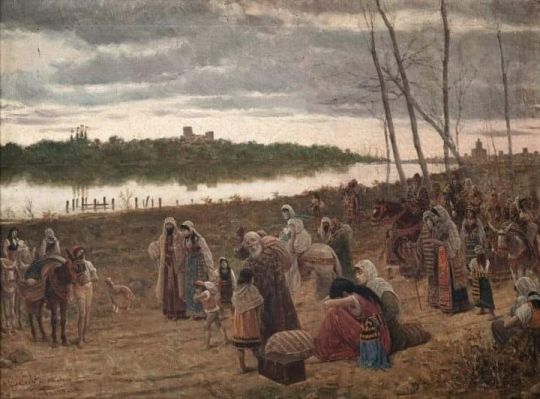
CUANDO LOS OTOMANOS RIDICULIZABAN A LOS REYES CATÓLICOS POR EXPULSAR A LOS JUDÍOS DE ESPAÑA
En 1492, los Reyes Católicos deciden expulsar a la población judía de sus reinos. Bayezid II, sultán del imperio otomano envió a la Armada turca bajo el mando del almirante Kemal Reis a España en 1492 para evacuar a un gran número de ellos de forma segura a tierras otomanas. Envió proclamas a todo el imperio de que los refugiados debían ser bien recibidos. Les concedió a los refugiados el permiso para establecerse en el Imperio Otomano y les concedió privilegios. Ridiculizó la conducta de Fernando II de Aragón e Isabel I de Castilla al expulsar a una clase de personas tan útiles para sus súbditos. "Te atreves a llamar a Fernando un gobernante sabio", dijo a sus cortesanos en una ocasión.
Su sucesor Solimán el Magnífico exclamó en una ocasión refiriéndose al rey Fernando el Católico:
"¿A éste le llamáis rey que empobrece sus estados para enriquecer los míos?".
Este mismo sultán le comentó al embajador enviado por Carlos V "que se maravillaba que hubiesen echado los judíos de Castilla, pues era echar la riqueza".
Los judíos de España contribuyeron en gran medida al creciente poder del Imperio Otomano mediante la introducción de nuevas ideas, métodos y artesanía. La primera imprenta en Estambul fue establecida por los judíos sefardíes en 1493. Los judíos disfrutaron de un período de florecimiento cultural, con la presencia de académicos como el talmudista y científico Mardoqueo Comtino; el astrónomo y poeta Solomon ben Elijah Sharbiṭ ha-Zahab; Shabbethai ben Malkiel Cohen y el poeta litúrgico Menahem Tamar.
9 notes
·
View notes
Photo

Escudo de la Universidad de Zaragoza La Universidad de Zaragoza tiene su origen en un estudio de artes, creado por la iglesia en el siglo XII, donde se enseñaban gramática y filosofía, y que concedía títulos de bachiller. El 13 de diciembre de 1474 el papa Sixto IV la elevó a la categoría de «Universitas magistrorum», al estilo de la Universidad de París, a solicitud del príncipe Fernando el Católico, entonces Rey de Sicilia. La disposición fue ratificada por el mismo papa en 1476 y por el Rey Juan II de Aragón en 1477. (en Zaragoza, Spain) https://www.instagram.com/p/Cn13RVWqLmd/?igshid=NGJjMDIxMWI=
2 notes
·
View notes
Text







A guide through the monarchs of Aragon in La Catedral del mar & Los Herederos de la tierra
@asongofstarkandtargaryen
During the series the role of the members of the monarchy is secondary, but they are used to help to establish a concrete historical context and they're very determinant in the situation of the Puig and Entanyol families involving political estrategies of supporting this or that king, that gave them benefits or dacay (Arnau's rise with Pedro IV, Genís & Roger rise with Juan I and Martín I and Bernat with Fernando I). So, I wanted to make a recopilation of the monarchs shown during these series and their families.
House of Aragon/ House of Barcelona (descendants of the Jimena dinasty)
The Jimena dinasty is called like that because its origin was Jimeno "the Strong", grandfather of Eneko Arizta, and one of its branches was the Arista-Iñiga dinasty started by Eneko.
Eneko, his son García Iñiguez and his grandson Fortún Garcés were Lords of Pamplona, Fortún Garcés married Awriya bint Lubb ibn Musa (great-grandaughter of Musa the Great), and one of their daughters was Oneka Fortúnez, who married Abd Allah I of Cordoba (their son was Muhammad, who fathered the calipha Abd al-Rahman III with a basque woman called Muzna) and then Oneka married Aznar Sánchez de Larraún, and had a daughter with him, Toda Aznárez. Toda married Sancho Garcés I, the truly first king of Pamplona, was Sancho Garcés I (the first king of the Jimena dinasty).
Sancho Garcés III (992-1036) was king of Pamplona, Count of Aragon and king consort of Castile, whose bastard son with Sancha de Aibar, Ramiro I, inherited the counties of Aragon, Sobarbe and Ribagorza, and united them to form the kingdom of Aragon.
Then Petronila I (1136-1173), Ramiro I's great-grandaughter, married Ramón Berenguer IV count of Barcelona. Their son Alfonso II of Aragon was the first king of the Crown of Aragon and Pedro IV's great-great- great-grandfather.
In summary all the Aragonese monarchs are descedants of Eneko Arizta (and that's the way we can link Irati with LCDM/LHDLT)
Pedro IV
Pedro IV of Aragon, II of Valencia and I of Mallorca (Balaguer, Lleida, Catalonia, September 5, 1319 - Barcelona, Catalonia, January 5, 1387), called "the Ceremonious" or the Punyalet ('the one with the dagger', due to a dagger he used to carry), son of Alfonso IV of Aragon and Teresa de Entenza.
King of Aragon, Valencia and Mallorca (1344-1387); Duke of Athens (1380-1387) and Neopatria (1377-1387); count of Barcelona (1336-1387) and of Ampurias (1386-1387).
In 1338 he married María de Navarra (1326-1347), daughter of Felipe III and Juana II of Navarra. Offspring:
Constanza (1343-1363), married in 1361 to Federico III of Sicily, and Juana (1344-1385), married in 1373 with Juan I de Ampurias.
In 1347 he married Leonor of Portugal (1328-1348), daughter of Alfonso IV of Portugal. She died the following year of the Black Death.
In 1349 he married Eleanor of Sicily (1325-1375), daughter of Pedro II of Sicily. Offspring:
Juan I (1350-1396), Martin I (1356-1410) and Leonor (1358-1382), married to Juan I of Castile. Leonor was the mother of Fernando I of Aragon.
In 1377 he married Sibila de Fortiá, daughter of the Empordà nobleman Berenguer de Fortiá. Offspring:
Isabel (1380–1424), who married Jaime II of Urgel, future suitor for the aragonese crown.
During his reign the Aragonese expansionism in the Mediterranean continued, focused on southern Italy and Greece.
Although he was ally of Alfonso XI, Pedro IV had a great rivalry with his son Pedro I of Castile and fought against him in some conflicts, like the War of the two Pedros (1356-1369) and the first Castilian Civil War (1351-1369), in which Pedro I was supported by Pedro I of Portugal (one of his bastard sons, Juan I of Portugal, was the founder and first king of the Avis dinasty) and Muhammad V of Granada, and Pedro IV supported the bastard children of Alfonso XI with his lover Leonor de Guzmán (Pedro de Aguilar, Sancho Alfonso, Fadrique Alfonso, Enrique II of Castile, Fernando Alfonso, Tello, Juan Alfonso, Juana Alfonso, Sancho and Pedro Alfonso), who started several revolts against Pedro I of Castile. The wars ended when Enrique killed Pedro I, and he became the first king of Castile of the Trastamara dinasty.
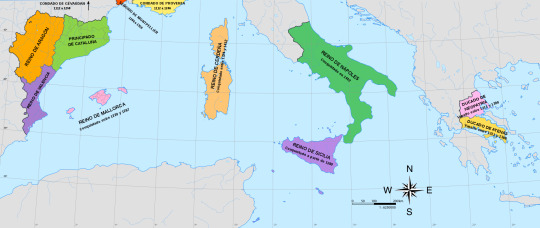
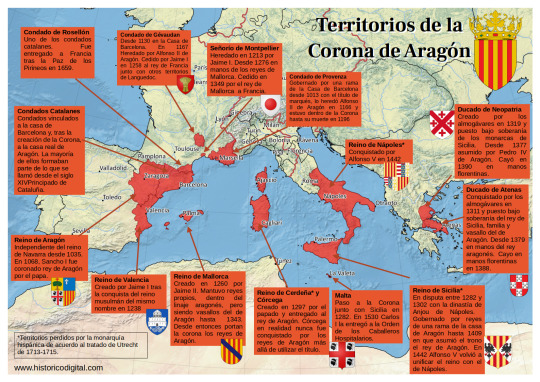
Sibila de Fortiá
Sibila de Fortiá (Fortiá, Girona, Catalonia, 1350 - Barcelona, Catalonia, 1406), queen consort of the Crown of Aragon (1377-1387). She was the daughter of Berenguer de Fortiá and his wife Francesca de Vilamarí. In 1371 she married for the first time Artal de Foces, an Aragonese nobleman, whom she widowed in 1374, and then she the lover of Pedro IV and had a daughter with him, Isabel.Pedro and Sibila married in 1377. After the wedding, Pedro surrounded himself with Empordà nobles as well as Sibila's relatives.
Pedro IV was very ill at the end of the year 1386, and Sibila, fearful of the wrath of the future King Juan, fled to the castle of San Martín de Sarroca (Barcelona), which belonged to her brother Bernat de Fortiá. There she was imprisoned by Juan I, who treated her harshly, accusing her of abandoning the king on his deathbed and of several robberies in the palace. She was confined in the castle of Moncada (Barcelona) until she renounced his property granted by the king. Finally, Sibila retired to the convent of San Francisco in Barcelona, where she died in 1406.
Juan I
Juan I of Aragon, called the Hunter or the Lover of All Kindness (Perpignan, Occitania, France, 1350 - Torroella de Montgrí, Girona, Catalonia, 1396), King of Aragon, Valencia, Mallorca, Sardinia and Corsica, and Count of Barcelona, Roussillon and Cerdanya ( 1387-1396). Son of Pedro IV and Leonor of Sicily.
His first marriage was with Marta de Armagnac (1347-1378), daughter of Count Juan I de Armagnac. With whom he had: Jaime (1374), Juana, (1375-1407) who married Mateo, Count of Foix. After the death of her father, she claimed the throne with her husband, but they were defeated; Juan (1376), Alfonso (1377) and Leonor (1378).
Widowed, Juan married Violante de Bar (1365-1431), daughter of Robert I, Duke of Bar. Offspring:
Jaime Duke of Girona (1382-1388), Yolanda, who married Louis II of Anjou, titular king of Naples. Their son, Luis III, claimed the throne after the death of Martín I, in the engagement of Caspe; Fernando Duke of Girona (1389), Antonia (1391-1392), Juan Duke of Girona (1392-1396), Eleanor (1393), Pedro Duke of Girona (1394) and Juan (1396)
Martin I
Martin I of Aragon, also called the Human or the Old (Girona, July 29, 1356-Barcelona, May 31, 1410), was king of Aragon, of Valencia, of Majorca, of Sardinia and count of Barcelona (1396-1420) and king of Sicily (1409-1410). Second son of Pedro IV of Aragon and his third wife Leonor of Sicily.
Martín was called "the Human" because of his great passion for the Humanities and books. The library of Martín I is the first that could be considered from Renaissance, if at that time in the history of the Iberian peninsula the term can already be used.
Martin married in 1372 with Maria de Luna, daughter of Lope, the first count of Luna, in 1374. From this union they were born:
Jaime (1378), Juan (1380) and Margarita (1388) and Martin I of Sicily "the Younger" (1376-1409), first husband of Blanca I of Navarra.
When Martin the Younger died, Martin married Margarita de Frades, although they left no issue.
His entire reign was marked by the Western Schism that divided Christianity since 1378. He was a supporter of the popes of Avignon (where he went the year of his coronation to swear allegiance to Benedict XIII "the Pope Luna", Pedro Martínez de Luna y Pérez de Gotor, with whom it seems that he came to establish a friendly relationship ), from whom he obtained support in his claims over the kingdom of Sicily against the Anjou, supporters of the popes of Rome. In 1400, he would marry his niece Yolanda to Louis II of Anjou in order to defuse tensions. He met in Avignon with the antipope Benedict XIII, Aragonese and a relative of the queen, with the intention of reaching a solution to the schism and, later, in 1403 he intervened militarily against the siege that Benedict suffered in his papal seat, rescuing him and welcoming him in Peñíscola .
House of Trastamara (the Aragonese branch)
Fernando I
Ferdinand I of Aragon (Medina del Campo, Valladolid, Castile and Leon, November 27, 1380-Igualada, April 2, 1416), also called Fernando de Trastámara and Fernando de Antequera, the Just and the Honest, was an infant of Castile, king of Aragon, Valencia, Mallorca, Sardinia, Count of Barcelona (1412-1416), and regent of Castile (1406-1415), during the minority of Juan II of Castile. Son of Juan I of Castile and Leonor of Aragon.
He was the first Aragonese monarch of the Castilian dynasty of the Trastámara, although he was of Aragonese origin on his mother's side.
He married Leonor de Alburquerque
Alfonso the Magnanimous (Medina del Campo, 1394-1458), king of Aragon, with the name of Alfonso V, and of Naples and Sicily, with the name of Alfonso I.
María de Aragón (Medina del Campo, 1396-1445), first wife of Juan II of Castile and mother of Enrique V of Castile
Juan II (Medina del Campo, 1397-1479), King of Aragon and King consort of Navarre.
Enrique (1400-Calatayud, 1445), II Duke of Villena, III Count of Alburquerque, Count of Ampurias, Grand Master of the Order of Santiago.
Leonor (1402-1445), who married Eduardo I of Portugal. Mother of Alfonso V of Portugal, Juana of Portugal (Enrique IV's second wife) and Leonor of Portugal, who married Frederick III of Habsburg (they were parents of emperor Maximilian I of Austria)
Pedro (1406-1438), IV Count of Alburquerque, Duke of Noto.
Sancho (1400-1416)
Alfonso V
Alfonso V of Aragon (Medina del Campo, 1396 – Naples, June 27, 1458), also called the Wise or the Magnanimous, king of Aragon, of Valencia, of Majorca, of Sicily, of Sardinia and Count of Barcelona (1426-1458); and King of Naples (1446-1458).
Alfonso V can be considered as a genuine prince of the Renaissance, since he developed an important cultural and literary patronage that earned him the nickname of the Wise and that would make Naples the main focus of the entry of Renaissance humanism in the sphere of the Crown of Aragon.
From his relationship with his lover Giraldona de Carlino, a napolitan noblewoman, he had three children:
Fernando (1423-1494), his successor in the kingdom of Naples under the name Fernando I.
Maria (1425-1449), married to Lionel, Marquis of Este and Duke of Ferrara.
Leonor, or Diana Eleonora (?-1450), married the nobleman Marino Marzano, Prince of Rossano.
Maria of Castile
María of Castile (Segovia, Castile and Leon, November 14, 1401-Valencia, October 4, 1458). Infanta of Castile, Princess of Asturias (1402-1405) and Queen of Aragon (1416-1458) for her marriage to Alfonso the Magnanimous. First daughter of Enrique III "the Mourner" and Catherine of Lancaster. Sister of Juan II of Castile, untie of Enrique IV and Isabel I.
The marriage between María and Alfonso is celebrated in the Cathedral of Valencia on October 12, 1415. The ceremony was officiated by the antipope Benedict XIII, who also granted the matrimonial dispensation for the wedding.
In 1420, when the king left for Naples for the first time, he left the government of his kingdoms in the hands of Maria as lieutenant general. The absence of the Magnanimous would last three years, during which María had to face the rapid deterioration of the economic situation in Catalonia, the territorial struggle with the Castilian Crown, as well as the conflicts of a social nature that shook her in different kingdoms. On his return to Aragon in 1423, Alfonso V began the war with Castile, along with his brother King Juan of Navarra. But her financial resources were exhausted and in 1429 Queen María had to act as a mediator between her husband and her brother, King Juan II of Castile, to put an end to the dispute. However, Alfonso's situation did not improve, due to the recession suffered by the Catalan economy and the social conflicts caused by it. The Courts of Barcelona in 1431 demanded from the king a series of measures to correct the enormous deficit of the Catalan treasury and trade. But Alfonso, fed up with these matters, returned to Italy and gave full powers to the queen as ruler of Aragon; he left the Iberian Peninsula forever on May 29, 1432. This marked Alfonso V's final break with the Crown of Aragon, which, however, he never renounced.
+ Bonus track (although he doesn't appear in this series)
Juan II
Juan II of Aragon and Navarra, the Great, or the Faithless according to the Catalan rebels who rose up against him (Medina del Campo, June 29, 1398-Barcelona, January 20, 1479) was Duke of Peñafiel, King of Navarre (1425-1479), King of Sicily (1458-1468) and King of Aragon, Mallorca, Valencia, Sardinia (1458-1479) and Count of Barcelona, son of Ferdinand I of Aragon and Leonor de Albuquerque.
From his first marriage to Blanca I of Navarra (daughter of Leonor of Castile and Carlos III of Navarra):
Carlos (1421-1461), Prince of Viana and Girona, Duke of Gandia and Montblanch, titular King of Navarra as Carlos IV (1441–1461), married Agnes of Cleves. He wrote the 'Chronicles of the Monarchs of Navarra', about the history of his antecessors, from Eneko Arizta in the 8th century up to the 15th century.
Juan (1423-1425)
Blanca of Navarra (1424-1464), first wife of Enrique IV of Castile
Leonor (1425-1479), married to Gastón IV de Foix, Queen of Navarre under the name of Leonor I.
From his second marriage to Juana Enríquez:
Leonor of Aragon (1448)
Fernando II (1452-1516), king iure uxoris of Castile (1474-1504) and then regent between 1507 and 1516, under the name of Fernando V due to his marriage to Isabel I, king of Sicily (as Fernando II, 1468-1516), Aragon and Sardinia (as Fernando II, 1479-1516), Naples (as Fernando III, 1504-1516), and from Navarra (as Fernando I, 1512-1516)
Juana (1455-1517), second wife of Fernando I of Naples. Her daughter Juana married Fernando II of Naples (Fernando I of Naples' grandson)
During his youth, Juan fought in the Castilian-Aragonese war (1429-30) and the Castilian Civil War (1437-1445) in the Aragonese team against Juan II of Castile, his son Enrique and the Constable Álvaro de Luna (favourite of Juan II), due to the Aragonese political influences in Castile and the full control that Álvaro de Luna had over Juan II of Castile that allowed him to become very powerful, so some members of the Castilian nobility wanted to remove Álvaro out of Juan II side because of that, and the Aragonese reacted to the anti-aragonese convictons of Álvaro.
Álvaro de Luna arranged a new marriage between Juan II of Castile and Isabel of Portugal (mother of Isabel I) in 1447. The constable intended with this dynastic alliance to strengthen the political ties that united Castile and Portugal against the common enemy: the Catalan-Aragonese Crown, but from 1449, Isabella of Portugal indirectly supported the maneuvers of the Great League of Nobles (allies of the Aragonese) formed against the constable. But it would not be until 1453 when Juan II of Castile, possibly tired of the continuous pressure from the aristocracy, left Álvaro on his own. It has often been said that it was the queen herself who demanded that her husband signed the prison order against Álvaro, through Juan Pacheco, Marquis of Villena.
By 1441 Blanca I de Navarra died and Juan II married the daughter of Fadrique Enríquez (one of his Castilian allies, the admiral of Castile), Juana Enríquez y Fernández de Córdoba.
After the death of Blanca I, a dispute between Juan II and Carlos de Viana about the sucession for the Navarrese throne. Juan was king Iure uxoris of Navarre and wanted to be keep his position as king, but Carlos and his supporters claimed that the prince was the rightful king as firstborn son of the queen and in 1451 the Navarrese civil war started.
In the following years the tension between Juan and Carlos increased with the birth of Fernando, who was pushed by his mother Juana to be the heir of Aragon and Navarra, which Juan later accepted. This change in the sucession was not accepted in Catalonia, that supported Carlos de Viana birthrights, and they started a rebellion against Juan II.
Other supporter of Carlos was Enrique IV, who offered his sister Isabel to Carlos in marriage as a sign of their alliance, but the wedding never happened.
Carlos died in 1461, although the war didn't ended because the Catalan nobility proposed other suitors for the Crown of Aragon and the Principality of Catalonia, like Enrique IV, Pedro of Portugal (grandson of Jaime II of Urgell) and Renato de Anjou during the Catalan civil war, that ended in 1472.
It's interesting that the interesting that the current situation of the Estanyol family at the end of Los Herederos de la tierra is that there are two brothers from different mothers, and whose father have benefited one of them over the other, so it may lead to tensions from the part that was not benefited, Arnau Jr is the main heir in Bernat's will, so maybe in the future Marta Destorrent will try to pit her son Baltasar against his elder brother to take Arnau Jr's place. By period of time I find very likely that this happens during the reigns Maria of Castile and Juan II, and the situation of the Estanyol succession could parallel the Carlos de Viana-Fernando II problem, although in this case the younger son was the benefited one and the one who inherited his father's kingdoms and maybe the Estanyols are part of the Catalan nobility that defended Carlos' birthrights, although some other Catalan nobles supported Juan II & Fernando alongside of peasants and smallfolk, during the First Remensa War during the Catalan civil war.
The Remensa War consisted in revolts organised by peasants who wanted to end the servitude to which their feudal lords had subjected them, so I think that probably the Estanyol-Llor family would support the peasants because of their backgrounds.
#la catedral del mar#los herederos de la tierra#the cathedral of the sea#heirs to the land#history#crown of aragon#aragonese monarchs#pedro iv de aragón#juan i de aragón#martín i de aragón#sibila de fortiá#fernando i de aragón#alfonso v de aragón#maria de castilla#juan ii de aragón#gifs#period dramas#house of aragon#house of trastamara#house of barcelona#long post
21 notes
·
View notes
Text
On April 9, 1481, she joined her husband, who was now Fernando II of Aragón, in Calatayud to open the Corts of that kingdom. Although no woman could succeed to Aragón’s crown, Fernando had ensured that Isabel be recognized as co-regent, governor, and general administrator there. She was designated by its new king as an “otro yo”—“another I”—whether he was present or absent. He had, after all, parental precedent. And on May 19 Isabel saw her son sworn heir to Aragón’s crown. That same month, presaging events and policies to come, there arrived at court some leading and ostensibly converted Canary islanders, guanches, captured and converted to Christianity in the current Castilian campaign spoken of as pacifying those islands. Isabel declared them to be under royal protection, free from enslavement, and parallel in privilege to her Castilian subjects. In June, the royal family solemnly entered Zaragoza, the venerable capital of Aragón; then, while Fernando progressed through his new realm, Isabel remained in Zaragoza’s splendid mudéjar palacio de la Aljafería, which was of special importance to her. It was the birthplace of her ancestor, Santa Isabel, the infanta of Aragón and queen of Portugal who was first in the long line of royal Isabels. Isabel and Fernando would attend to restoring that palace so evocative of their ancient, honorable, and intertwined heritage. She rejoined him in Barcelona on June 28, her presence during the next three months helping to finally bring that most recalcitrant of cities to obedience and even affection.
- Peggy K. Liss, Isabel the Queen: Life and Times
117 notePosta
2 notes
·
View notes
Text

El Monasterio de San Juan de los Reyes fue encargado directamente, en conmemoración de la batalla de Toro y el nacimiento del príncipe Juan, por los Reyes Católicos a Juan Guas en 1476. No sólo es uno de los templos más bellos de la antigua capital imperial de Toledo sino uno de los mejores conjuntos del gótico hispano-flamenco.






#arquitectura#españa#gótico#s. xv#isabel i de castilla#fernando II de aragón#reyes católicos#juan guas
0 notes
Text
Tal día como hoy 19 de octubre ...
2005: Comienza el primer proceso contra Sadam Husein y siete coacusados, en Irak.
1989: En la Central nuclear de Vandellós I (España) , ocurre un incendio que ocasiona malfuncionamiento en la refrigeración del reactor y que, según los expertos, estuvo muy cerca de fundir el combustible nuclear y ocasionar un desastre.
1989: El escritor español Camilo José Cela obtiene el premio Nobel de Literatura.
1987: Sucede el Lunes Negro en la bolsa de Nueva York, el índice Dow Jones pierde más de 500 puntos, en la que la peor caída desde el crack de 1929.
1973: Se publica en Inglaterra el disco Pin Ups de David Bowie.
1950: El Ejército Popular de Liberación de China ocupa la ciudad de Qamdo, dentro del movimiento que se conocerá como la invasión del Tíbet.
1943: Un joven microbiólogo con 20 años llamado Albert Schatz descubre la estreptomicina, un antibiótico que ayudará a combatir la tuberculosis, pero será su jefe, Selman Waksman, quien se apropiará del descubrimiento y aunque tras la demanda del alumno y acuerdo de compartir el descubrimiento obtendrá el Premio Nobel de Medicina de 1952.
1900: El físico Max Planck descubre la ley espectral de la radiación del cuerpo negro (ley de Planck), en su propia casa de Grunewald, cerca de Berlín (Alemania).
1868: Nace la peseta en España como unidad monetaria, por decreto del Gobierno Provisional tras el derrocamiento de Isabel II.
1469: Se casan Isabel I de Castilla y Fernando II de Aragón, conocidos como Los Reyes Católicos (título que les atribuyó el papa Alejandro VI), en el Palacio de los Vivero, en Valladolid (España). Lo que supuso la unificación de los reinos de Castilla y Aragón.
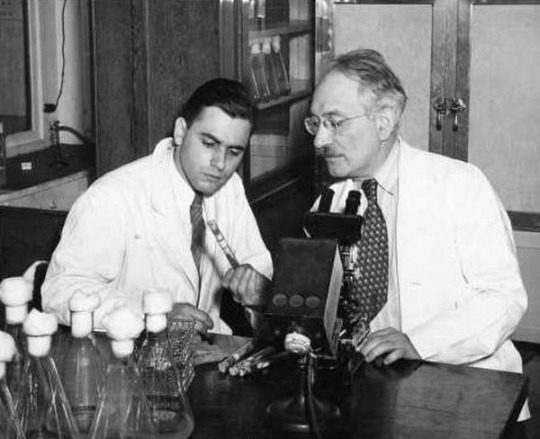
(Albert Schatz descubre la estreptomicina, un antibiótico que ayudará a combatir la tuberculosis, pero será su jefe, Selman Waksman, quien se apropiará del descubrimiento)
4 notes
·
View notes
Text
¿Cuál es la diferencia entre Castilla y Ceuta en términos de historia y cultura?
🎰🎲✨ ¡Obtén 500 euros y 200 giros gratis para jugar juegos de casino con solo un clic! ✨🎲🎰
¿Cuál es la diferencia entre Castilla y Ceuta en términos de historia y cultura?
Historia de Castilla
La historia de Castilla es fascinante y llena de acontecimientos que han marcado el curso de España y de Europa en general. Castilla, una región situada en el centro de la península ibérica, ha sido testigo de importantes eventos a lo largo de los siglos.
El origen de Castilla se remonta a la época de la Reconquista, cuando los reinos cristianos luchaban contra la presencia musulmana en la península. Castilla se convirtió en un reino poderoso gracias a figuras como El Cid, un héroe legendario que luchó valientemente por su tierra.
En el siglo XV, Castilla vivió uno de sus momentos más importantes con la unión de los reinos de Castilla y Aragón gracias al matrimonio de Isabel I de Castilla y Fernando II de Aragón. Este hecho marcó el inicio de la unificación de España y sentó las bases para la exploración y conquista de América.
Durante siglos, Castilla fue clave en la historia de España, contribuyendo a la expansión del imperio español y al desarrollo cultural y artístico del país. Grandes monarcas como Carlos I y Felipe II dejaron su huella en la región, construyendo palacios y fortalezas que todavía se conservan en la actualidad.
Hoy en día, la historia de Castilla sigue viva en sus ciudades y pueblos, en su arte, arquitectura y tradiciones. Es un legado que nos recuerda la importancia de esta región en la historia de España y su papel en la configuración de la identidad nacional.
Cultura de Castilla
La cultura de Castilla es un tesoro cultural que ha perdurado a lo largo de los siglos, enriqueciéndose con la historia y las tradiciones de esta región de España. Castilla, con sus dos principales regiones, Castilla-La Mancha y Castilla y León, ha sido cuna de grandes pensadores, escritores y artistas que han dejado una huella imborrable en la historia de España.
Uno de los aspectos más destacados de la cultura castellana es su rica tradición literaria. Grandes figuras como Miguel de Cervantes, autor de "Don Quijote de la Mancha", o Santa Teresa de Jesús, mística y escritora, han dejado un legado literario invaluable que sigue siendo estudiado y apreciado en todo el mundo.
Además de la literatura, la arquitectura castellana es otro aspecto fundamental de su cultura. Castilla alberga numerosos castillos, iglesias y catedrales góticas que muestran la grandeza y la riqueza artística de la región. Ejemplos emblemáticos son la Catedral de Burgos o el Alcázar de Segovia, auténticas joyas arquitectónicas que atraen a miles de visitantes cada año.
La gastronomía castellana también es digna de mención, con platos tradicionales como el cochinillo asado, el lechazo o la sopa de ajo, que reflejan la riqueza culinaria de la región.
En resumen, la cultura de Castilla es un universo infinito de tradiciones, arte, literatura y gastronomía que merece ser explorado y admirado por su belleza y su relevancia histórica.
Historia de Ceuta
Ubicada en la costa norte de África, la historia de Ceuta se remonta a miles de años atrás. Conocida por su estratégica posición geográfica, ha sido un territorio disputado por diversas civilizaciones a lo largo de los siglos.
Fundada por los fenicios en el siglo VIII a.C., Ceuta pasó a formar parte del Imperio romano en el siglo II a.C. Posteriormente, fue ocupada por los vándalos, los bizantinos y los visigodos antes de caer bajo dominio musulmán en el año 709.
Durante la Edad Media, Ceuta fue un importante enclave comercial y militar del norte de África, controlado por distintas dinastías musulmanas. En 1415, la ciudad fue conquistada por Portugal, marcando el inicio de la presencia europea en la región.
En 1580, Ceuta pasó a formar parte de España, convirtiéndose en un bastión estratégico para el control del Estrecho de Gibraltar. A lo largo de los siglos, la ciudad ha sido escenario de numerosos conflictos y asedios, manteniendo su relevancia geopolítica hasta la actualidad.
Hoy en día, Ceuta es una ciudad autónoma española con una rica diversidad cultural y una mezcla única de influencias europeas y africanas. Su patrimonio histórico y arquitectónico, que incluye la famosa fortaleza del Monte Hacho y la Catedral de Santa María de la Asunción, atrae a visitantes de todo el mundo que desean sumergirse en su fascinante historia.
Cultura de Ceuta
Ubicada en el norte de África, Ceuta es una ciudad autónoma española con una rica y diversa cultura que refleja sus impresionantes raíces históricas y geográficas. Con una mezcla única de influencias españolas, africanas y árabes, la cultura de Ceuta es verdaderamente fascinante y única en su tipo.
Uno de los aspectos más destacados de la cultura de Ceuta es su cocina. La fusión de sabores españoles y marroquíes crea platos deliciosos y aromáticos que son una delicia para los sentidos. Los alimentos frescos y las especias se combinan para crear platos únicos que reflejan la historia culinaria diversa de la región.
Además de la cocina, la música y la danza son partes integrales de la cultura de Ceuta. El flamenco, el raï y la música andalusí se entrelazan en esta ciudad, creando una banda sonora vibrante y emocionante que anima las calles y los festivales locales.
Los festivales y celebraciones en Ceuta también son eventos vibrantes que muestran la riqueza cultural de la ciudad. La Semana Santa, la Fiesta del Sacrificio y la Fiesta de la Virgen del Carmen son solo algunas de las festividades que se celebran con entusiasmo y devoción en esta ciudad multicultural.
En resumen, la cultura de Ceuta es una fusión encantadora de influencias españolas, africanas y árabes que dan como resultado una ciudad vibrante y llena de energía. Tanto los lugareños como los visitantes pueden sumergirse en esta rica cultura y disfrutar de todo lo que Ceuta tiene para ofrecer.
Diferencias entre Castilla y Ceuta
Castilla y Ceuta son dos regiones muy diferentes en España, que se distinguen por sus características geográficas, culturales y sociales.
Castilla es una región ubicada en el centro de España, conocida por su historia medieval, sus castillos imponentes y sus extensas llanuras. Por otro lado, Ceuta es una ciudad autónoma situada en la costa norte de África, con una fusión única de influencias españolas y marroquíes.
Una de las principales diferencias entre Castilla y Ceuta es su ubicación geográfica. Mientras que Castilla se encuentra en el interior de España y está rodeada de tierra, Ceuta está en la costa y limita con el mar Mediterráneo. Esta ubicación ha influido en la historia y la cultura de cada región de manera significativa.
Además, las diferencias culturales entre Castilla y Ceuta son evidentes en su arquitectura, gastronomía y tradiciones. Castilla es conocida por su arquitectura medieval, sus plazas históricas y su rica comida tradicional. En cambio, Ceuta tiene una arquitectura que refleja su historia colonial, una gastronomía que mezcla influencias españolas y marroquíes, y tradiciones únicas como la celebración del Día de Ceuta.
En resumen, Castilla y Ceuta son dos regiones con características únicas que reflejan la diversidad cultural y geográfica de España. Mientras que Castilla destaca por su historia medieval y su paisaje rural, Ceuta impresiona por su fusión de culturas y su ubicación estratégica en la costa norte de África. Ambas regiones ofrecen una experiencia única a los visitantes que desean sumergirse en la rica historia y cultura de España.
0 notes